Just so you know, as an Amazon Associate we earn from qualifying purchases made via bold red links, buttons or images.
Last Updated on December 17, 2023
Want to know a secret? There’s a simple and effective way to improve the quality of your home espresso, and you likely already have the tools you need on hand.
The Weiss Distribution Technique, known as WDT, is a method of stirring espresso grinds to minimize clumping and encourage even distribution.
Given that uniform size and distribution of coffee grounds is the most important factor in pulling a smooth and balanced shot of espresso, it’s surprising to me that WDT remains a relatively fringe technique. This could be attributed to its lack of presence in the professional barista world, where high-performance equipment takes care of things for you, and time is of the essence.
https://m.media-amazon.com/images/I/419PKwEossL._SL500_.jpg
If you struggle to pull a consistently excellent shot of espresso with your home equipment, give WDT a try. I bet the results will amaze you.
Origins of WDT
The Weiss Distribution Technique (WDT) was developed in 2005 by biochemist, computer scientist and home barista John Weiss. Weiss, being a man of curiosity and science, was searching for ways to improve the quality of his home espresso. Using a bottomless portafilter, he noticed a lot of variety and inconsistency in his extraction, but wasn’t quite sure what to do about it.
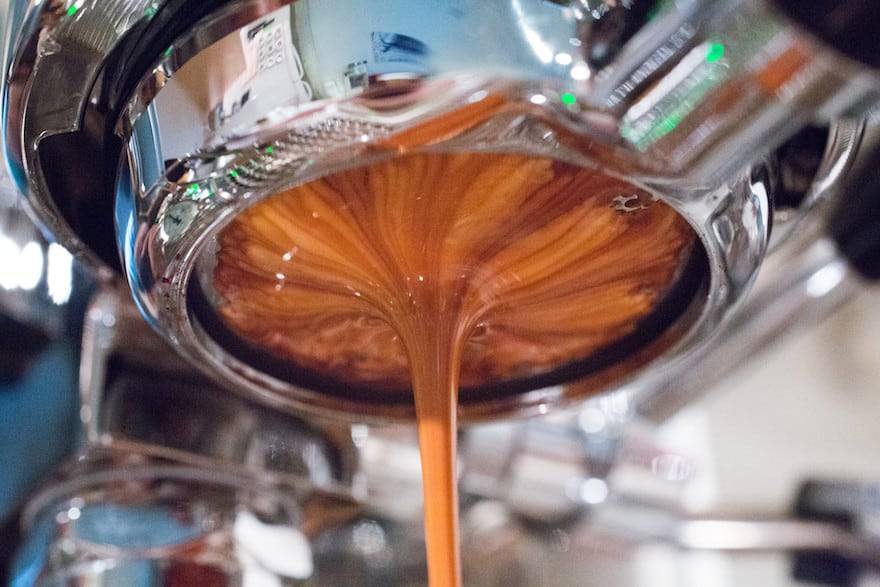
When Weiss read the words of Chris Tacy, that grind distribution is not only the most important factor in proper espresso extraction but also the most neglected, a lightbulb went on for Weiss. Realizing the limitations of his home equipment, Weiss began to experiment. He found a simple and effective way to improve grind distribution by stirring his espresso grinds.
Why use WDT for espresso?
It’s likely you struggle to pull a consistently excellent shot of espresso on your home machine. I know I do. We can’t expect the same quality as our local cafe, where a skilled barista crafts our beverage on a professional-grade machine. There are, however, several things you can do to improve the quality and consistency of your home espresso experience. WDT is among the easiest and most approachable.
One of the culprits in uneven extraction is channeling, which is caused by an inconsistent grind size, as well as grind clumping.
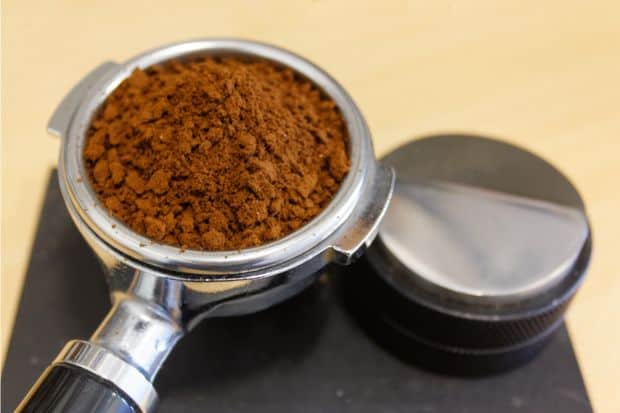
Water will find the path of least resistance, slowing in areas where your grinds are dense and speeding up where they’re looser. The result is an uneven extraction, some grinds get over-extracted and some under-extracted, and the end product will likely taste bitter or sour. Or a strange combination of both.
If you don’t have a quality burr grinder, that’s the best place to start. It’s virtually impossible to get a consistent grind without one. Thankfully, there are a number of high performance grinders on the market that won’t break the bank, but even these won’t leave your coffee grinds completely free of clumps. Static and coffee oils will always be a factor.
The combination of a great grinder and WDT, however, has the potential to really improve your home espresso game.
How to WDT
WDT is extremely basic and doesn’t require any fancy equipment. Simply use a fine yet sturdy pointed implement to stir your coffee grinds once in the portafilter.
Some baristas favor a circular motion starting from the outer rim of the portafilter and working into the centre. John Weiss, however, insists that the pattern is of no consequence, as long as you have a thorough yet gentle approach. This will breakup clumps and help evenly distribute your grounds.
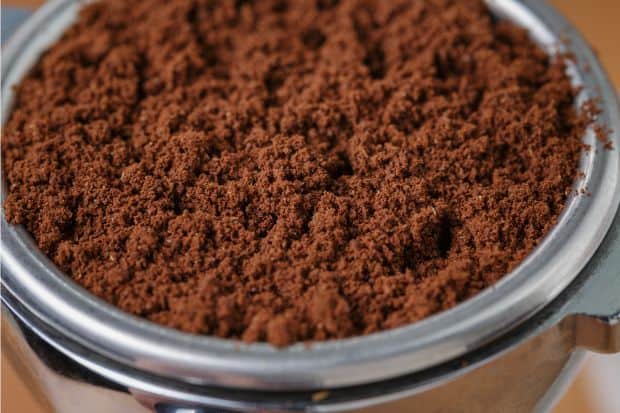
There is a lot of debate around the correct depth of WDT: deep, shallow, or raking. Espresso raking, where you “rake” the surface or your grinds to encourage even distribution, will certainly help, but it fails to address any clumps below the surface.
Although the difference between deep and shallow WDT is somewhat minimal, tests show that the most balanced extraction comes from deep WDT. This makes sense, since you’re affecting all of the grinds in your portafilter.
Next, simply give your portafilter a gentle knock on the counter to encourage your newly fluffed grinds to resettle and evenly distribute. Then tamp, and pull your espresso shot as you normally would.
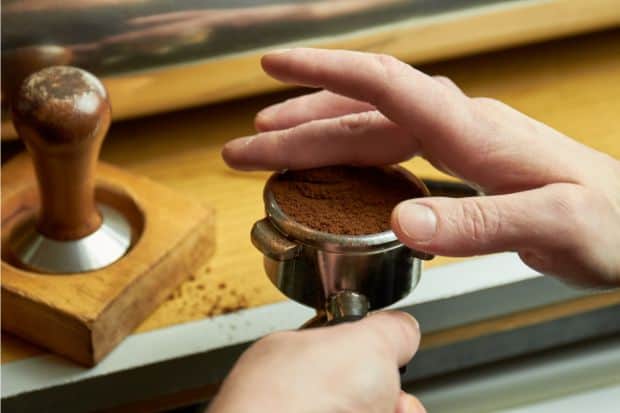
What You Need to WDT
If you’re a home espresso enthusiast, already researching techniques to achieve a more even extraction, you likely have a decent home espresso setup and will need very little to start experimenting with WDT.
If not, you’ll need a few essential items to put you on the right path.
Grinder
As mentioned earlier, you’ll need a good quality burr grinder as a jumping off point for grind consistency. Without a quality grinder, inconsistent grind size will forever thwart your efforts to achieve even distribution. Check out our list of the best grinders under $500 to start your search.
Bottomless Portafilter
You’ll also want a bottomless portafilter to study and adjust your extraction. You can learn so much from how your extraction begins, if it gathers into an even flow in the centre, how fast it runs, and its color. If you’re still learning the basics of espresso extraction, check out our article on how to time espresso shots.
You can certainly experiment with WDT without a bottomless basket, but it becomes much trickier to observe and adjust your process.
A quality grinder and bottomless portafilter are really the starting points for great home espresso in general. What you need to add for WDT is pretty basic.
WDT Tool for Stirring
The essential WDT item is something to stir your grinds with. You will need a fine yet sturdy object. You want something in the range of 0.24- to .04 mm in diameter, and you absolutely don’t want anything over 1 mm.
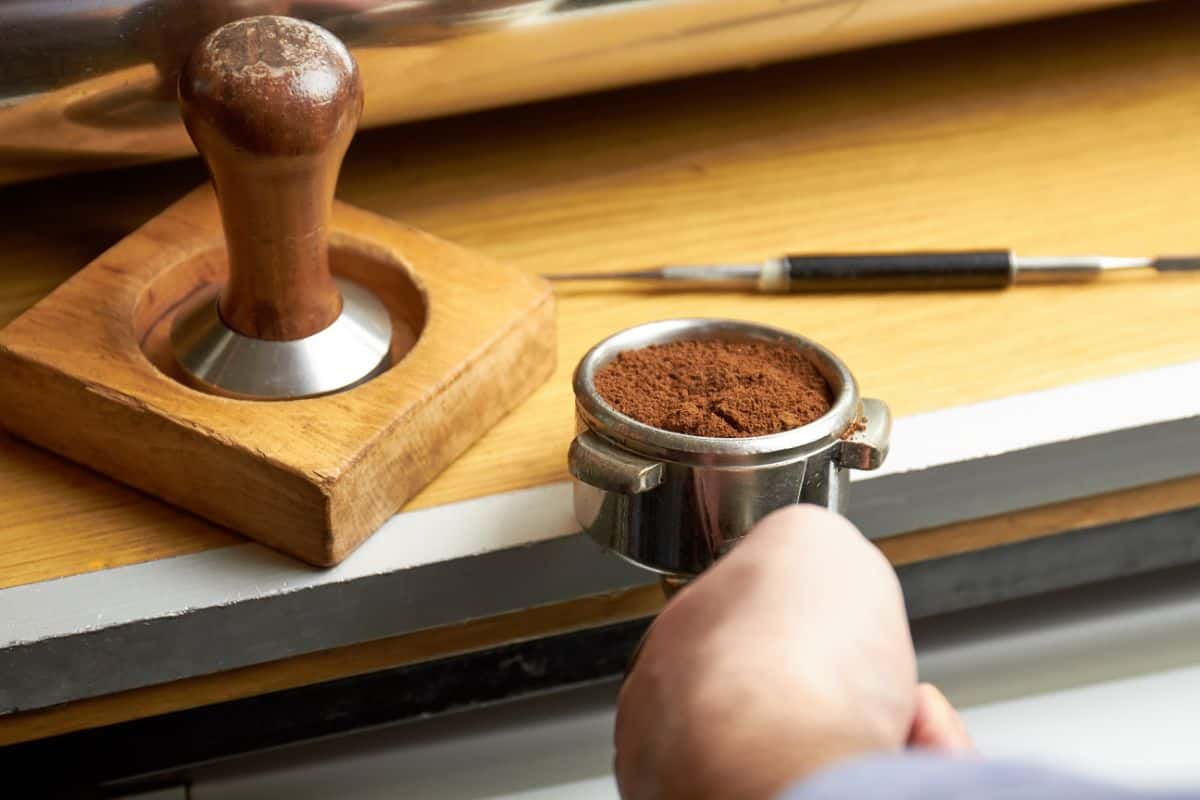
John Weiss used a dissecting needle, which he happened to have on hand. It’s actually quite a handy tool and you can easily find them online. You can also use a safety pin bent open, or a sewing pin. Anything that is both fine and sturdy will get the job done, just make sure you properly clean it before use, and then continue to use it only for this purpose.
There are also several WDT tools now on the market, often sporting several needles in their design, which does speed up the process somewhat. There are some very attractive and useful tools, such as the Morils WDT Tool, available at fairly reasonable price points.
https://m.media-amazon.com/images/I/413Bw-J9HRL._SL500_.jpg
Check availability
There are cheaper stainless offerings as well, but I personally love the ergonomic grip and gorgeous look of the walnut handle on the Morils. It also comes with a matching walnut stand for storing the tool, which will help maintain the integrity of the needles.
If you prefer a DIY approach, there are some ingenious designs online. The most popular approach is to purchase a set of acupuncture needles and insert several of them into a wine cork. It’s not nearly as attractive as something like the Morils, but it absolutely gets the job done.
Funnel
Stirring your grinds can get a tad messy, and losing grinds can affect your dose and ratio, so it’s handy to have some sort of funnel for your portafilter. As with WDT needle tools, there are now specially designed portafilter funnels such as the Matow Stainless Steel Dosing Ring, which are super useful and affordable.
https://m.media-amazon.com/images/I/31gIEBAzsoL._SL500_.jpg
Check availability
If you want to stick to the DIY approach, John Weiss found that a single serving yogurt container with the bottom cut out worked like a charm.
Improving your home espresso technique is both fun and rewarding. Upgrading your equipment will often help, but something as simple as WDT can greatly contribute to a more balanced and nuanced extraction. You likely have what you need already on hand, so you’ve really got nothing to lose.
Give it a try. I bet you’ll be amazed at what a little time and attention can achieve.

